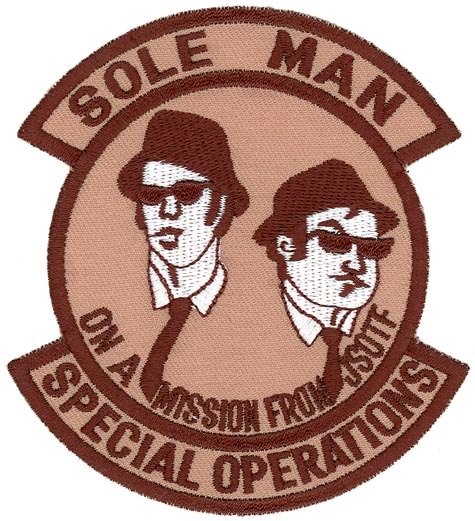Description
Korean computer made 3.5 inch-90mm
JOINT SPECIAL OPERATIONS TASK FORCE (JSOTF)
A JSOTF is a temporary joint SOF headquarters established, by the NCA or a Joint Force Commander (JFC), to accomplish a specific mission or to control SOF in a specific theater of operations. The JSOTF is composed of special operations units from more than one Service. The JSOTF may have conventional non-special operations units assigned or attached to support the conduct of specific missions.
Creation of and Transition to a JSOTF
Higher command may “stand up” a JSOTF in a variety of ways. Under most circumstances, a regional CINC will direct his SOC to form a JSOTF. That JSOTF might be deployed and employed in advance of the JTF or multinational force of which it will eventually become a part, or the JSOTF and the multinational force might be organized concurrently.
Generic Organization of a Joint Special Operations Task Force
A JSOTF HQ, or a JSOTF, does not have a fixed organization; it is task organized. While the headquarters normally will be able to perform normal command and staff functions, it may rely on non-SOF elements for certain staff activities. JSOTF HQs vary in size as well as scope of mission. Personnel within the JSOTFs have numbered from less than 20 to more than 200. A JSOTF is an organization flexible in both size and composition, and that flexibility provides its primary utility.
A JSOTF is organized in a manner similar to conventional task forces, and JSOTF HQs normally are organized internally along service component or functional lines (i.e., J1 through J6, and ARSOF, NAVSOF, AFSOF etc.). JSOTFs normally are organized to meet a specific SO mission or an operation of limited duration, although they may be formed as standing organizations, depending upon NCA, theater command, or JTF guidance. The establishment of a JSOTF is appropriate when SOF command and control (C2) requirements exceed the capabilities of the theater SOC staff. JSOTF HQs normally are formed around elements from the theater SOC or an existing SOF unit with augmentation from other Service SOF. Also, a JSOTF may be deployed as a complete package from outside the theater. This can be done to provide an additional JSOTF for the regional CINC or to relieve the SOC from the responsibility of organizing a JSOTF.
When subordinate to a Joint Task Force Commander, other than the theater SOC, the JSOTF commander serves as the Joint Force Special Operations Component Commander (JFSOCC). Normally the JFSOCC exercises day-to-day C2 of assigned or attached SOF. The JFSOCC allocates forces against strategic or operational tasks and supports other JTF component commanders based on guidance from the Commander, Joint Task Force (CJTF). Additionally, other responsibilities of the JFSOCC are to:
- Make recommendations on the proper employment of special operations forces and assets.
- Plan and coordinate special operations.
- Synchronize the conduct of special operations with the other component commanders.
Deconfliction, coordination, and transfer of forces are always critical concerns for SO commanders, regardless of organizational status. Deconfliction and coordination activities routinely include target deconfliction, communications frequency allocation, surface and airspace deconfliction, fire support coordination, and coordination for logistics support. SOF must be compatible with conventional forces that either host or support their activities. This is especially true during time-critical contingency planning operations. For example, if SOF are operating from naval surface vessels during forced-entry operations, they must be prepared to function compatibly with the host vessel. Weapons and communications must be deconflicted with ship systems, and SOF helicopters must be compatible with shipboard fuel systems. Likewise, the conventional force commander must be sensitive to his own operations, which may require modification so as not to inhibit the operation of SOF.
JSOTF Support Relationships
In many contingency operations, JSOTF HQs have been established for command and control. SOF have been deployed, and employed well in advance of conventional force elements. Coordinating the transition from special operations to conventional operations, when ordered, is crucial. Such coordination of conventional and special operations ensures that the timing and tempo of the overall unified campaign is maintained. Only the NCA can authorize and direct the assignment of forces to combatant commands or their transfer between combatant commands. When transfer of forces is permanent, the forces are reassigned. When transfer of forces is temporary, the forces may be either reassigned or attached. If the forces are reassigned, the gaining combatant commander exercises Combatant Command (COCOM) of the reassigned force. If the forces are attached, the NCA normally specifies in the deployment order that the gaining combatant commander will exercise OPCON of the attached force. When USSOCOM forces deploy from CONUS into a theater for a specific short-duration mission, these forces are normally attached to the theater combatant commander and may be placed OPCON to the JFSOCC. This requires extensive coordination when the mission is planned out of theater. Because USSOCOM must prepare the forces, it is vital that the JFSOCC clearly communicate the theater combatant commander’s requirements. The JFSOCC assists the theater combatant commander in charge of operational control of SOF from USSOCOM to theater control, coordinating transfer to theater C4I structure, and arranging in-theater support, to include staging facilities. This may require coordination with other theater combatant commanders when those facilities lie within their AORs. JFSOCC planning must ultimately include force recovery and redeployment.
